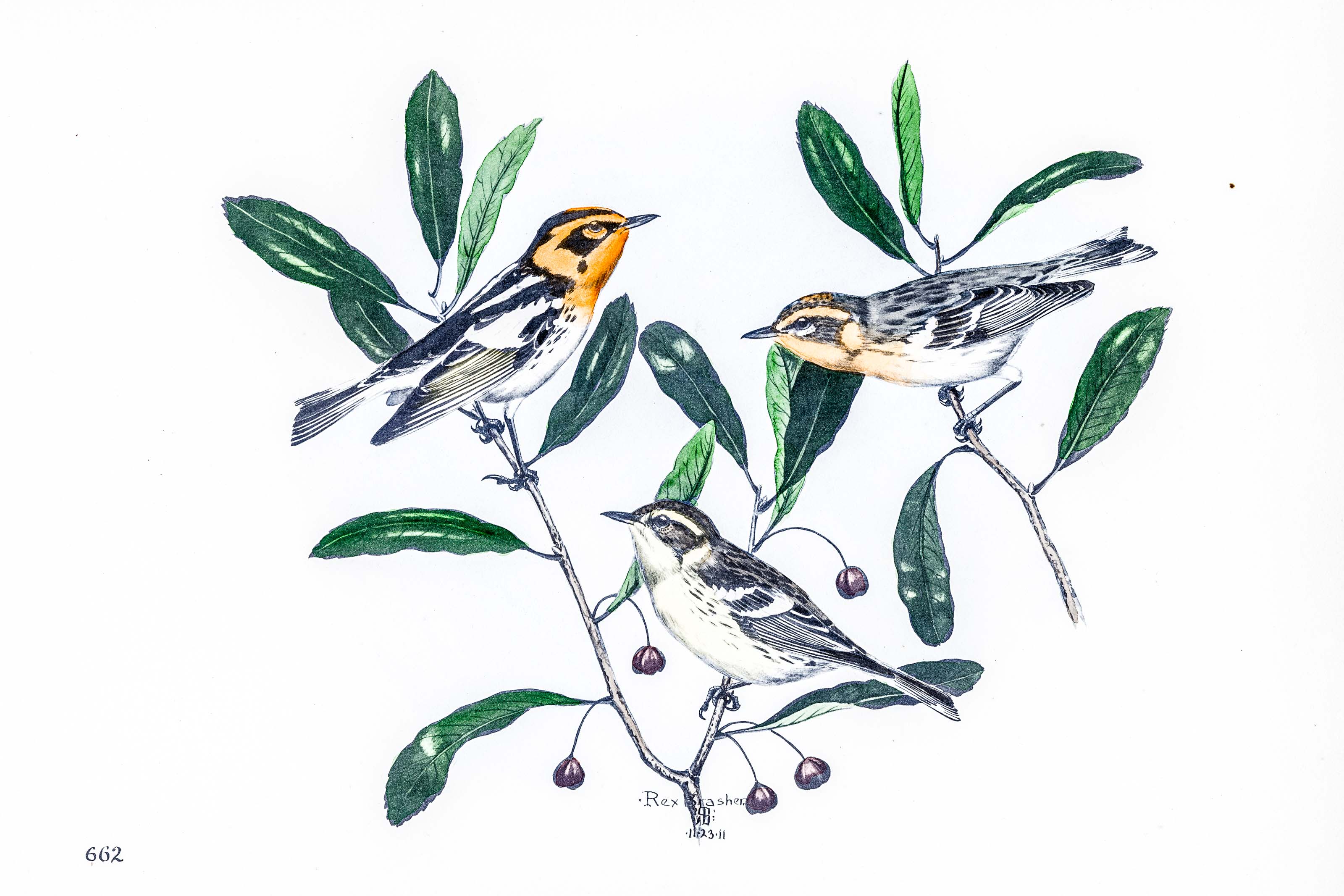
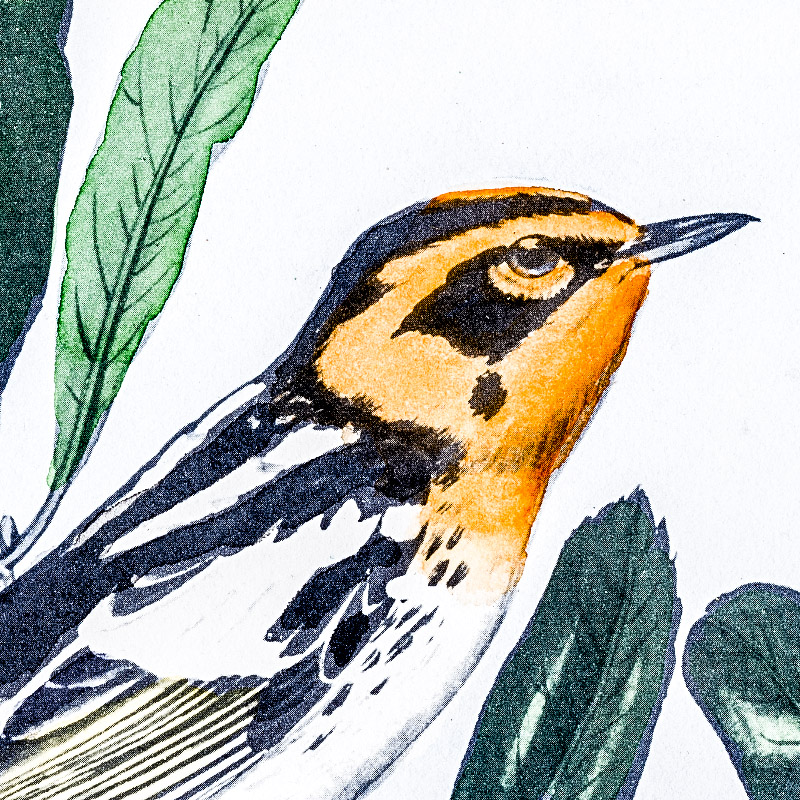
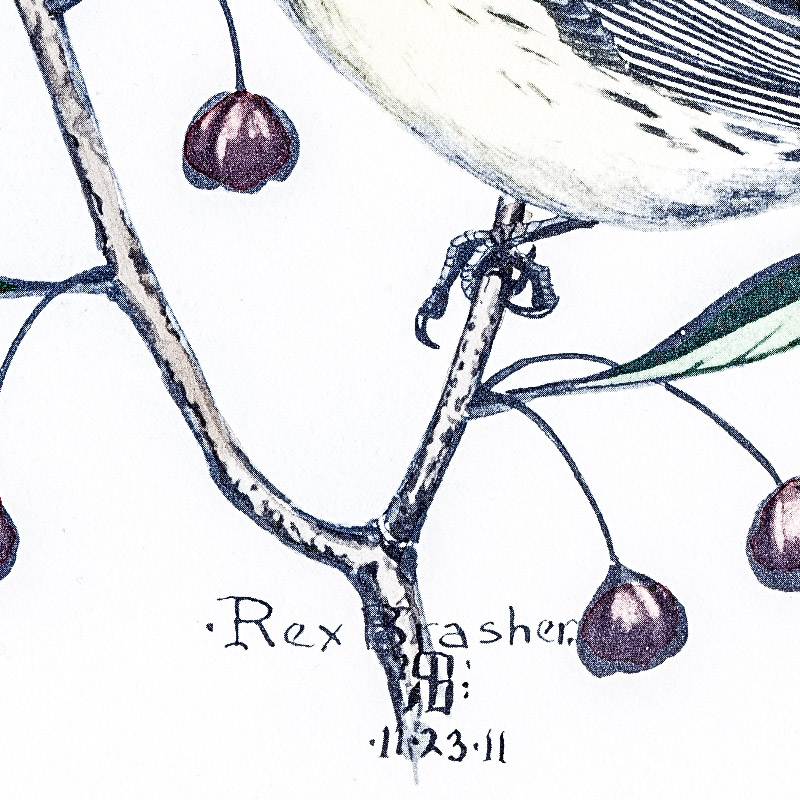
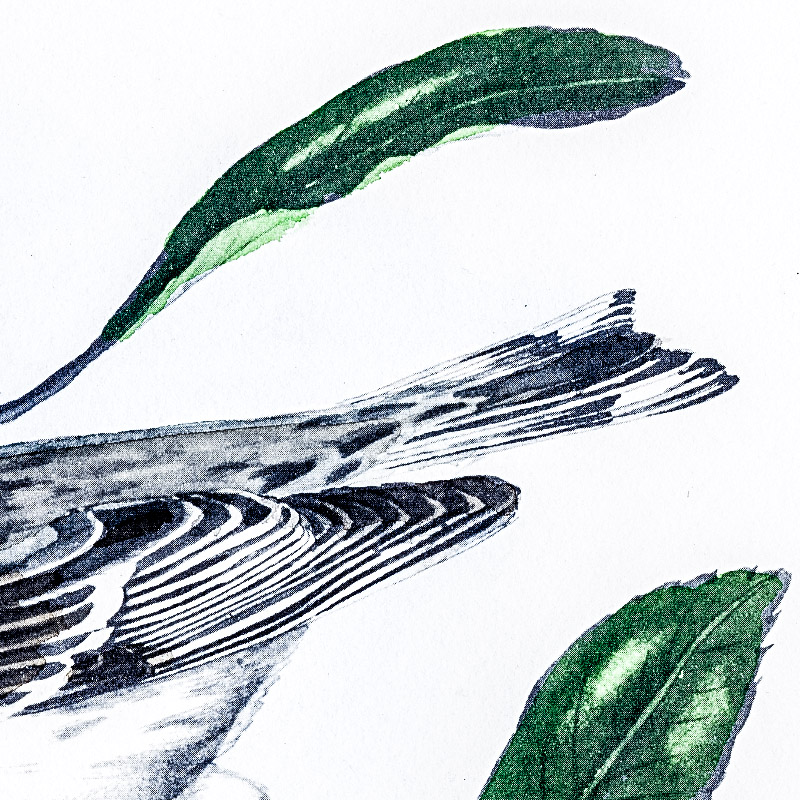

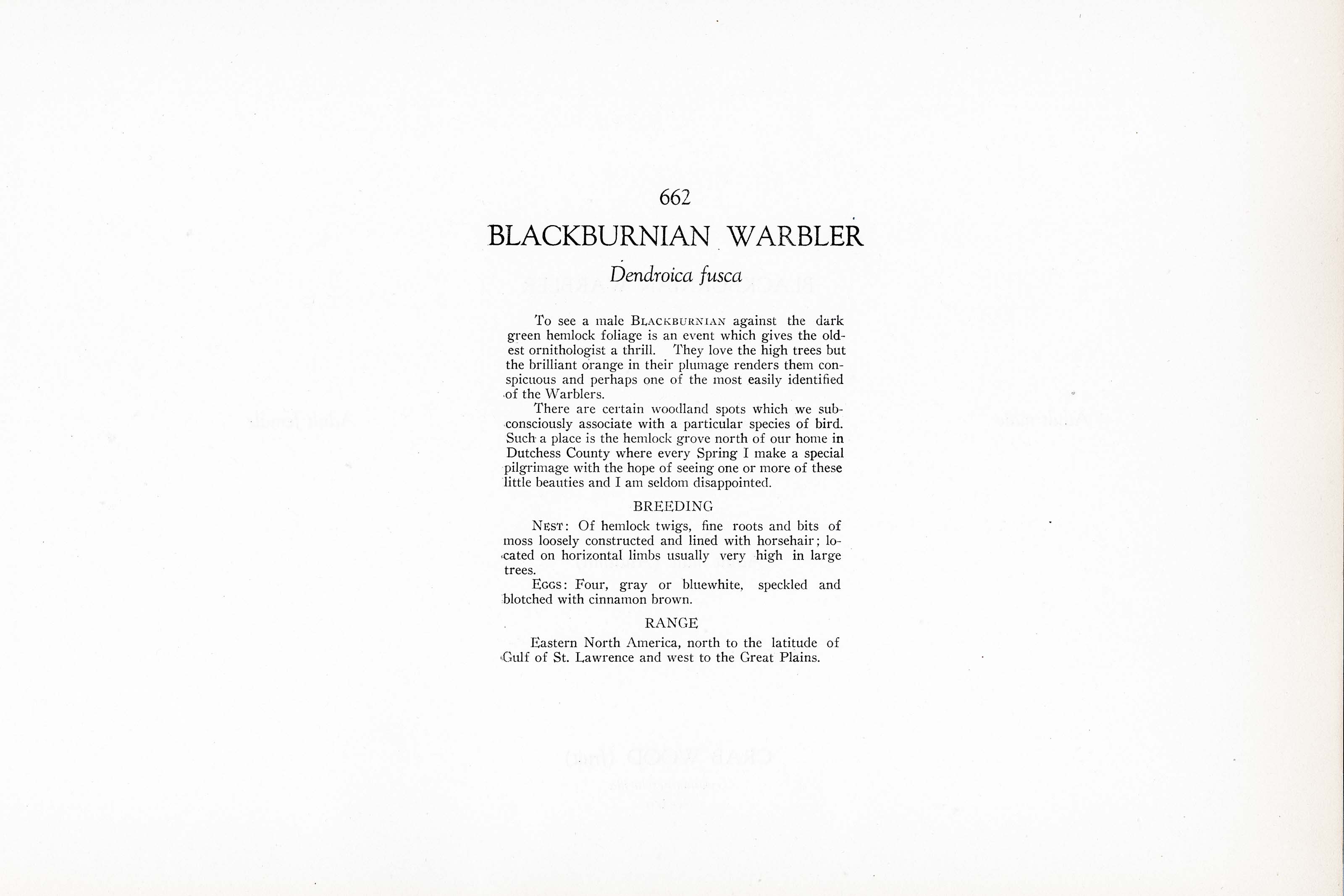

1911
1930
11
662
A team of dedicated board members, volunteers, and student interns has published every page in Volume 9. This volume includes 360 images of paintings and lyrical descriptions of birds, now available online for everyone to enjoy anywhere in the world. This is a monumental task. Each volume requires approximately 400 hours to photograph, edit, transcribe, catalog, and publish online. We need your support to complete this work.
If you're tech-savvy, have a good eye, are meticulous with details, and love structured data, please consider volunteering by emailing us at hello@rexbrasher.org.
We encourage all bird lovers and supporters to consider a monetary donation to support our mission to make Rex's work available for everyone. You can provide a one-time or recurring donation online.
To see a male BLACKBURNIAN against the dark green hemlock foliage is an event which gives the oldest ornithologist a thrill. They love the high trees but the brilliant orange in their plumage renders them conspicuous and perhaps one of the most easily identified of the Warblers.
There are certain woodland spots which we subconsciously associate with a particular species of bird. Such a place is the hemlock grove north of our home in Dutchess County where every Spring I make a special pilgrimage with the hope of seeing one or more of these little beauties and I am seldom disappointed.
NEST: Of hemlock twigs, fine roots and bits of moss loosely constructed and lined with horsehair; located on horizontal limbs usually very high in large trees.
EGGS: Four, gray or bluewhite, speckled and blotched with cinnamon brown.
Eastern North America, north to the latitude of Gulf of St. Lawrence and west to the Great Plains.
A small 25-foot tree distributed thru the Keys of southern Florida.